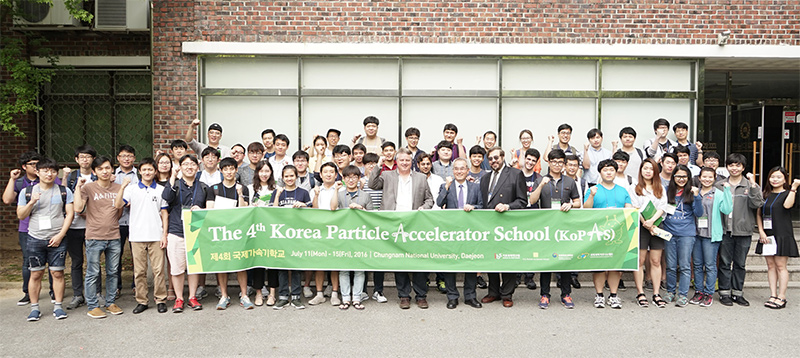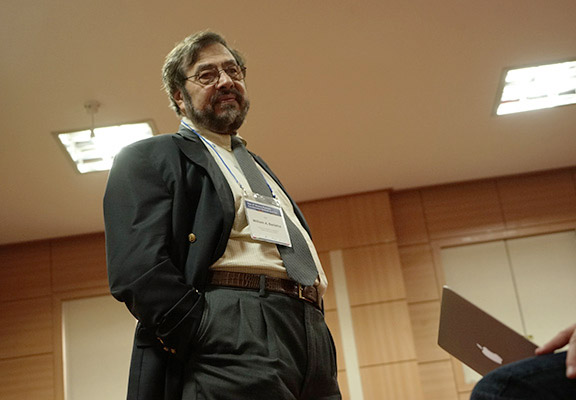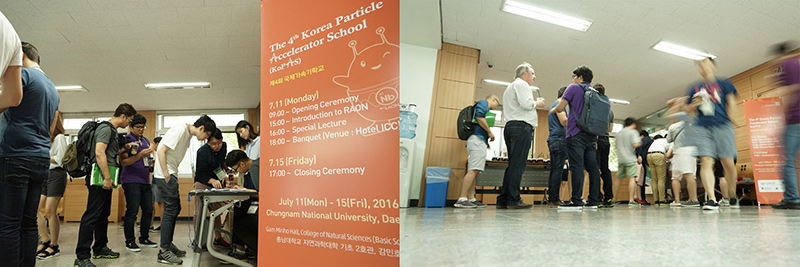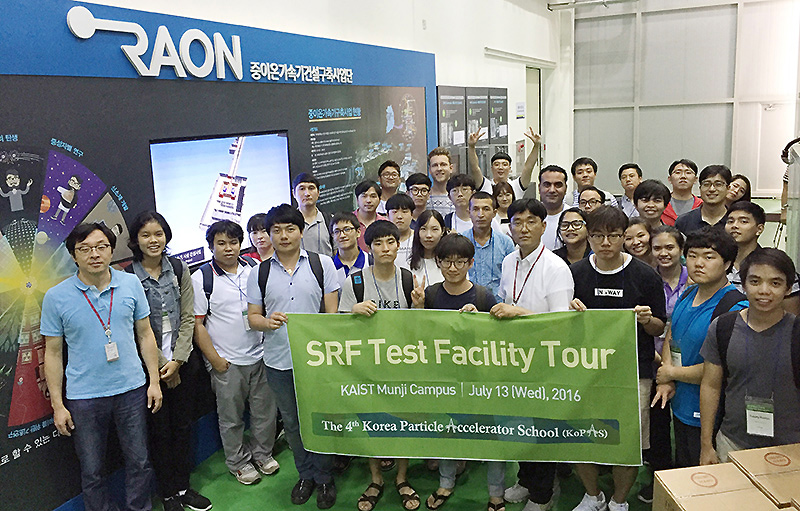주메뉴
- About IBS 연구원소개
-
Research Centers
연구단소개
- Research Outcomes
- Mathematics
- Physics
- Center for Underground Physics
- Center for Theoretical Physics of the Universe (Particle Theory and Cosmology Group)
- Center for Theoretical Physics of the Universe (Cosmology, Gravity and Astroparticle Physics Group)
- Dark Matter Axion Group
- Center for Artificial Low Dimensional Electronic Systems
- Center for Theoretical Physics of Complex Systems
- Center for Quantum Nanoscience
- Center for Exotic Nuclear Studies
- Center for Van der Waals Quantum Solids
- Center for Relativistic Laser Science
- Chemistry
- Life Sciences
- Earth Science
- Interdisciplinary
- Center for Neuroscience Imaging Research (Neuro Technology Group)
- Center for Neuroscience Imaging Research (Cognitive and Computational Neuroscience Group)
- Center for Algorithmic and Robotized Synthesis
- Center for Genome Engineering
- Center for Nanomedicine
- Center for Biomolecular and Cellular Structure
- Center for 2D Quantum Heterostructures
- Center for Quantum Conversion Research
- Institutes
- Korea Virus Research Institute
- News Center 뉴스 센터
- Career 인재초빙
- Living in Korea IBS School-UST
- IBS School 윤리경영


주메뉴
- About IBS
-
Research Centers
- Research Outcomes
- Mathematics
- Physics
- Center for Underground Physics
- Center for Theoretical Physics of the Universe (Particle Theory and Cosmology Group)
- Center for Theoretical Physics of the Universe (Cosmology, Gravity and Astroparticle Physics Group)
- Dark Matter Axion Group
- Center for Artificial Low Dimensional Electronic Systems
- Center for Theoretical Physics of Complex Systems
- Center for Quantum Nanoscience
- Center for Exotic Nuclear Studies
- Center for Van der Waals Quantum Solids
- Center for Relativistic Laser Science
- Chemistry
- Life Sciences
- Earth Science
- Interdisciplinary
- Center for Neuroscience Imaging Research (Neuro Technology Group)
- Center for Neuroscience Imaging Research (Cognitive and Computational Neuroscience Group)
- Center for Algorithmic and Robotized Synthesis
- Center for Genome Engineering
- Center for Nanomedicine
- Center for Biomolecular and Cellular Structure
- Center for 2D Quantum Heterostructures
- Center for Quantum Conversion Research
- Institutes
- Korea Virus Research Institute
- News Center
- Career
- Living in Korea
- IBS School
News Center
| Title | KoPAS- Where Young Students Dream to Become Particle Physicists | ||||
|---|---|---|---|---|---|
| Name | Department of Communications | Registration Date | 2016-07-22 | Hits | 4504 |
| att. |
 thumb.jpg
thumb.jpg
|
||||
KoPAS- Where Young Students Dream to Become Particle Physicists- The event, hosted by IBS/ RISP was held in Daejeon from July 11 to 15 -
"I will keep trying to attend the Korea Particle Accelerator School in the future,” says KAIST freshman SIM Jaehyu. “The people I’ve met here and the skills I’ve learned are going to be put to use as a valuable resource for my dream." Jaehyu participating in his third KoPAS may be more familiar with these classes than other students, but he is second to none in being seriously absorbed in lectures. His interest in particle physics developed in his childhood, and more so since he first participated in KoPAS in 2014 when he was a junior in the Korea Science Academy of KAIST. He has been fascinated by this course and has a strong determination to attend this event every year. This year KoPAS was held at Chungnam National University in Daejeon, from July 11 to 15.The organizer of this event is the Rare Isotope Science Project (RISP) of the Institute for Basic Science (IBS) in cooperation with the U.S. Particle Accelerator School (USPAS). The objective of the program is to encourage the participation of talented science students in accelerator and related science projects and also to develop a curriculum that will provide the necessary background for prospective researchers in accelerator science and nuclear physics. KoPAS was first held in 2012, and this year marks the fourth edition. This year, internationally prominent lecturers from USPAS were invited, and they led the programs focusing on specific topics about Radio Frequency (RF) systems, beam physics and beam diagnostics.
Students showed an avid interest in the Korea Particle Accelerator School. A total of 71 students attended this program, including 19 international students from Germany, China, Uzbekistan, Syria, Thailand, amongst others. These multinational students, including the eight who even flew from Thailand and Uzbekistan for the purpose of attending this program, devoted themselves to learning despite the sweltering July heat in Korea. In line with the growing portion of participants who have studied electromagnetism, dynamics and relativity, advanced courses were prepared to meet the needs of these students keen to acquire expertise. The excellent cadre of instructors for the entire period of KoPAS 2016 included Dr. John Byrd, Program Head of the Center for Beam Physics at Lawrence Berkeley National Laboratory (LBNL) in the U.S.A and Professor William Barletta, Director of USPAS who offered lectures on RF systems, beam physics and beam diagnostics. In addition, Dr. KIM Jong Won, Head of the System Installation Division of RISP at IBS, introduced a construction plan for the heavy-ion accelerator RAON, and participating students had the opportunity to visit the Superconducting RF Facility for RAON located at KAIST Munji Campus. Emeritus Professor Mannque Rho, a world-renowned nuclear physicist from the Saclay Nuclear Research Centre of the CEA (French Atomic Energy Commission), delivered a special lecture titled, "The proton mass mystery and compact stars."
Thanks to thorough preparation, KoPAS 2016 was well received among participants. Foosang Watanyu, from Thailand, studies electron accelerators and attended KoPAS to deepen his understanding of beam dynamics, "I am particularly impressed by the comparison between beam and pendulum. The professors are very active and put a great amount effort in teaching for a better understanding." The young Thai student added that he would attend the next KoPAS if he has the chance. Kongmali Kanlayaporn, also attended KoPAS 2016 with Mr. Watanyu, and expressed his wish to participate in the next edition of KoPAS because he wants the opportunity to study what he missed out on this time, and to emphasize what he studied again. He plans to take a course in particle accelerator in his university to gain a better background knowledge so that he can be fully prepared for the next KoPAS.
Interview with William A. Barletta (USPAS Director) “Expecting successful collaborations between USPAS and KoPAS”For more details about KoPAS 2016, we met with Professor William Barletta (USPAS Director) 1. What are the purposes of holding this event (KoPAS) and why particularly was this event held in Korea?
2. What do you think about the Korean students who have participated in this event? 3. How do you feel about holding the 4th Korea Particle Accelerator School? 4. What are your future plans for KoPAS?
|
|||||
| before | |
|---|---|
| before |
- Content Manager
- Public Relations Team : Yim Ji Yeob 042-878-8173
- Last Update 2023-11-28 14:20

















